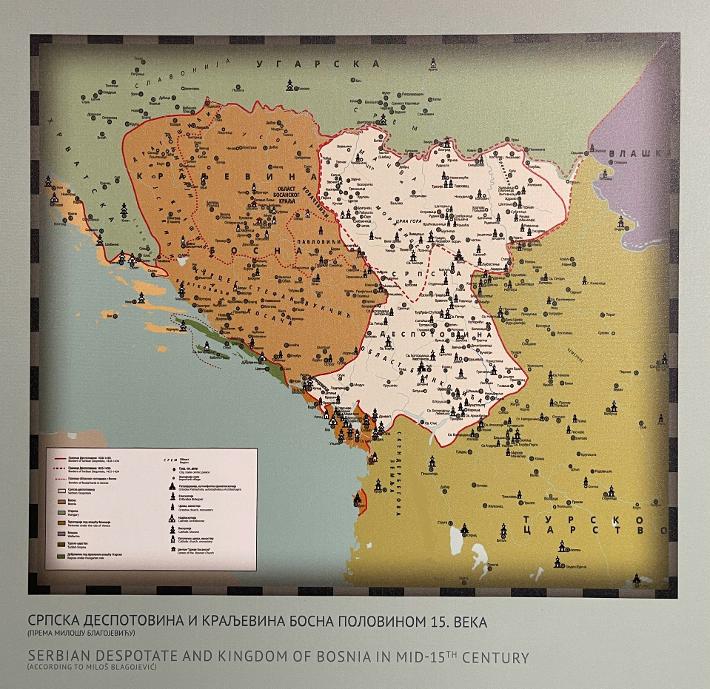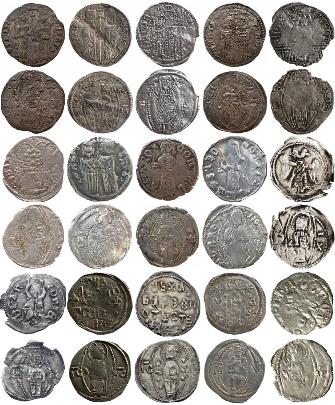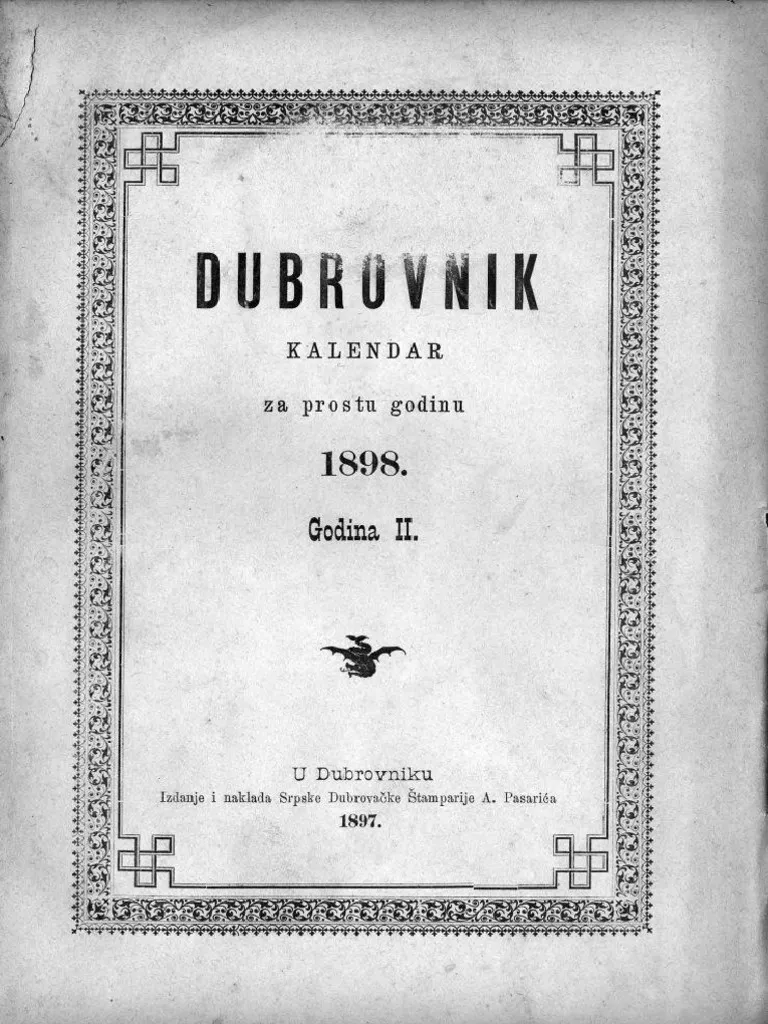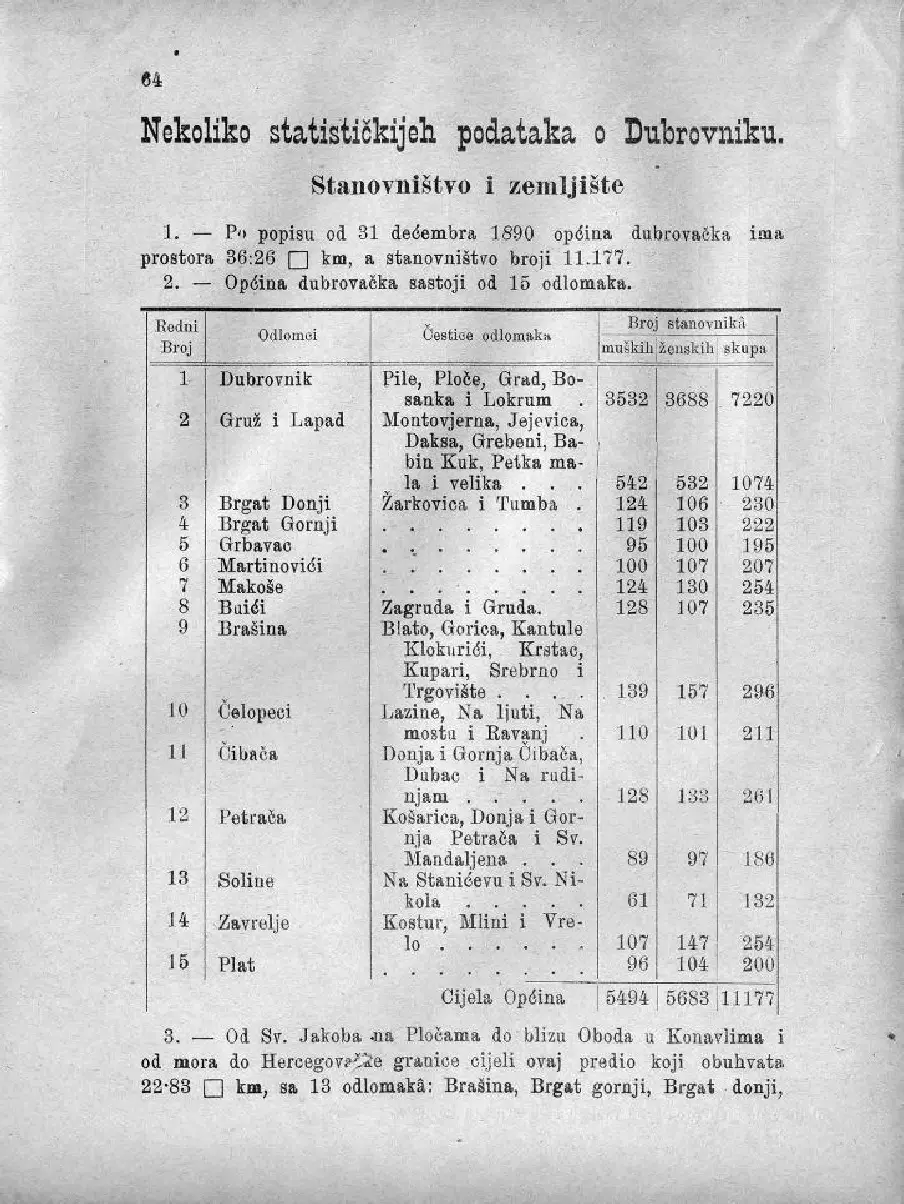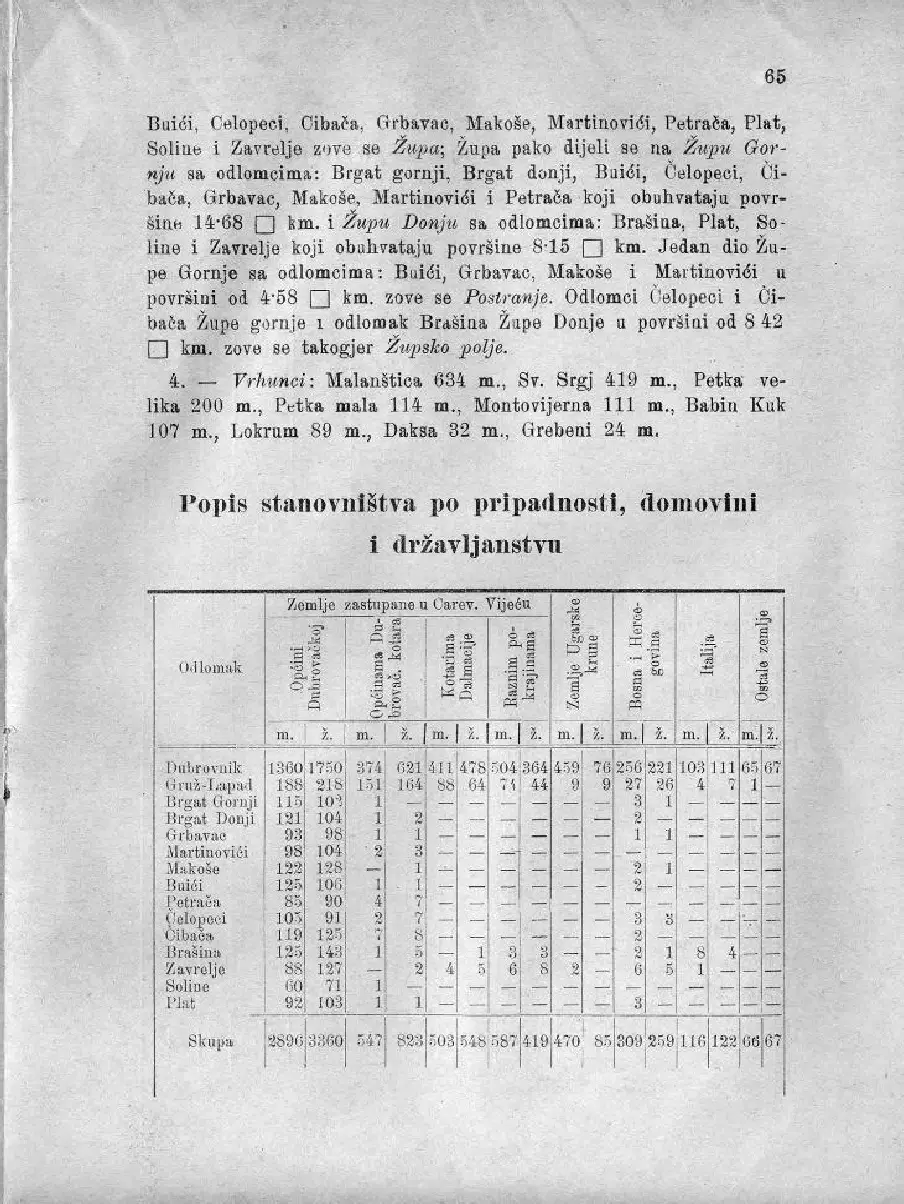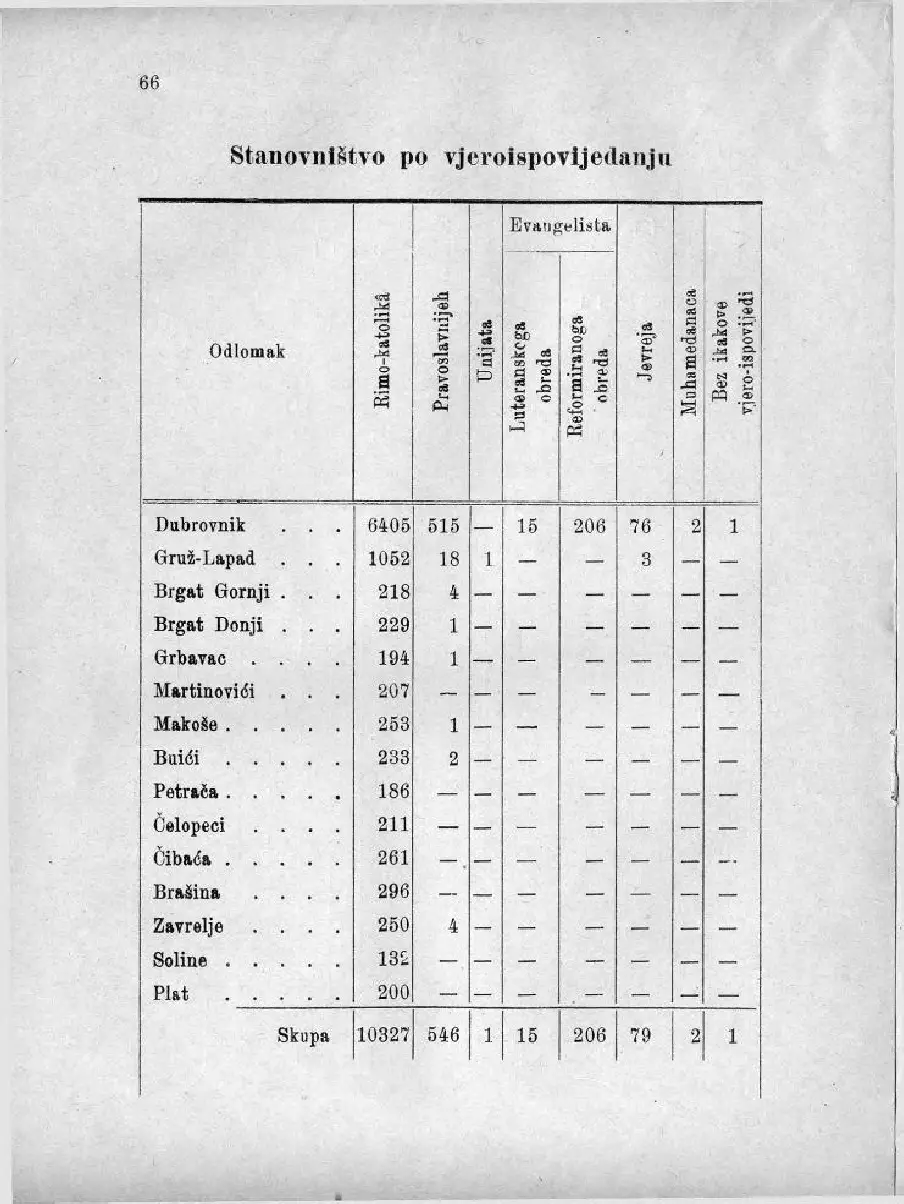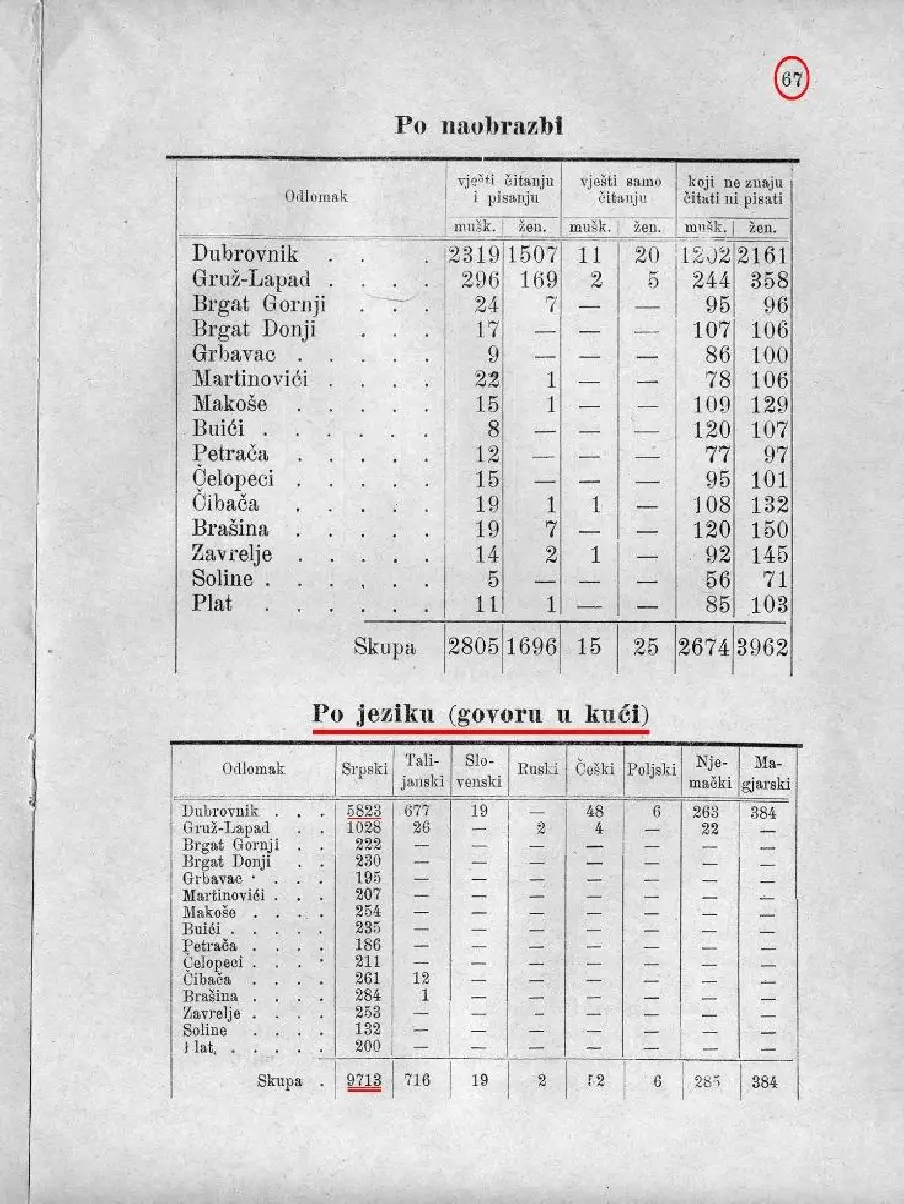MONEY AND THE POPULATION OF THE INDEPENDENT CITY OF DUBROVNIK
The coins of the independent city of Dubrovnik from the 15th to the 18th century with depictions of St. Blasius with a Latin description on the obverse and Jesus standing surrounded by pearls on the reverse (Picture 1 and 2) is the same depiction as on the reverse of the coins of Serbian rulers starting with Emperor Stefan Dušan Nemanjić 1346-1355 (1-5), Emperor Uroš Nemanjić 1355-1371 (6 & 7), Prince Lazar 1371-1389 (8 & 9), Prince from 1393 and despot Stefan Lazarevic 1402-1427 (10-13) and Đurđ Branković before he became despot 1410-1412 (14 & 15). (Picture 3)
Later coin editions of the city of Dubrovnik show the city itself with its harbor and silver perper and half perper from the 17th century onwards with depictions of St. Blasius.
Due to trade, coins and mints in Dubrovnik were in Latin, as were many issues of Serbian rulers, but much else was in Cyrillic alphabet.
Prof. Zlata Bojović, Ph.D., historian of literature, professor of the Faculty of Philology at the Department of Serbian Literature, winner of the City of Belgrade Prize for Literature, has Dubrovnik literature as the center of her scientific interests. The award winning book "History of Dubrovnik Literature", published by the "Serbian Literary Association" in "Kol", reads:
“The printing houses were in Cyrillic, and those in the trial, in which books were to be printed in "Serbian letters and language". Thus, the first book for Catholics - a prayer book - was printed by Frano Ratković from Dubrovnik in 1512 in Venice in Cyrillic. Other books of the same type were printed in the 16th century in constitutional Cyrillic.
In written documents and in published books, the people of Dubrovnik called their language: Dubrovnik, ours, Serbian (for several centuries there was a chancellor of the Serbian and Slovene languages in the Dubrovnik government), Slovene (Slavic) and Illyrian. It would be arrogant to think that they did not know what they were talking about and that they could not define their own language for several centuries."
In the book "Culture of the Serbs in Dubrovnik 1790-2010", from the treasury of the Serbian Orthodox Church of the Holy Annunciation, edited by Goran Spaić, Jelica Reljić and Miroslav Perišić, archive of Serbia, Serbian Orthodox Church Municipality in Dubrovnik, Belgrade - Dubrovnik, on the 24th and 25th page it is written:
"It is known that Dubrovnik based a significant part of its economic prosperity in the Middle Ages on trade and trade privileges that, along with other states, enjoyed in Serbia and Bosnia. Many old contracts and letters remain as testimony of the developed and deep ties that existed between the small Republic of St. Blasius and the large states in its hinterland. Almost all Serbian rulers were in close contact with the Dubrovnik Senate, usually with trade agreements, but also with numerous state problems that concerned them. It is known that the people of Dubrovnik helped Emperor Dušan ascend to the throne and were his constant allies during his reign. His good relations with the young and enterprising Serbian king was used by the people of Dubrovnik to confirm the privileges on the Pelješac peninsula, which they had already agreed with the Bosnian Ban Stefan Kotromanović, and to sign a contract according to which the Pelješac peninsula and the town of Ston from the Zahum region became the property of the people of Dubrovnik. Pelješac peninsula
(the archaic name is Stonski Rât) was of special strategic and economic importance for the people of Dubrovnik, and that is why they made great efforts to, after acquiring it, fortify Small and Big Ston with long ramparts and towers, modeled on the walls of Dubrovnik, and thus protection from conquest and robbery. The contract for Pelješac was reached in 1333 between King Dušan and the Dubrovnik government (then still nominally under Venetian patronage) for 500 gold
perper of the annual fee, and the people of Dubrovnik undertook, among other things, to facilitate the free practice of the Orthodox faith on the peninsula. It is known that in 1219 Saint Sava founded the bishopric of Hum with its headquarters in Ston and that a significant part of the population there was of the Orthodox faith.
The Dubrovnik authorities implemented a restrictive religious policy, which is a completely characteristic medieval principle guided by the principle: whose power is in the state his religion (cuius regio eius religio). So very quickly, with the power of state laws, they conditioned the Orthodox and practically forced them to convert to Catholicism. The contemporary "transition" from Catholicism to Orthodoxy conversely, in these areas, it escapes our critical judgment and would require special research studies that would shed additional light on this subject. But it is quite certain that any comparison with the Age of Enlightenment and modern views within the framework of nation-states leads to wrong conclusions, especially if you do not
put events into a broad context in the relations between East and West, Rome and Constantinople, and the "crusades" of that time in this microspace of ours, which marked the border of worlds and empires.
However, here we would like to point out a completely different fact, namely that the people of Dubrovnik paid tribute (income) to Serbian monasteries for a full 470 years, according to the contract with Emperor Dušan until the very abolition of the Republic of Dubrovnik.
The people of Dubrovnik, according to Dušan's wish, expressed in the aforementioned contract, paid the agreed amount to the Jerusalem Monastery of the Holy Archangels Michael and Gabriel, the endowment of King Milutin, and later due to difficult times in the Holy Land, the people of Dubrovnik fulfilled their obligation to the Serbian Monastery Hilandar of Holy Mount. Many years later, the tribute was considered by both parties as a contribution (alms, which was called the Hilandar candle) to the monks who pray to God and the Most Holy Mother of God for the preservation and well-being of Dubrovnik. The protocol visit of the Hilandar monks to the Dubrovnik government, which took place every two years, was part of the state ceremonies of the Republic of Dubrovnik. It is certain that the passage of the Saints in procession through Dubrovnik aroused the attention and curiosity of the inhabitants, and the old chroniclers left notes about it. The people of Dubrovnik prepared a special welcome for the monks and their entourage in the Small Council. After the appropriate greeting speeches were exchanged, the monks would sing antiphons and tropars to the Holy Mother of God and present the prince and councilors with gifts that they had brought with them, usually fresh and dried fruit, as a sign of good wishes towards the hosts. After checking the valid monastic powers of attorney and comparing
part of the broken gold coin (according to the other half that was kept from the previous time), the state treasury was approached and the contribution was taken. Words of gratitude and respect followed, after which the monks would leave Dubrovnik. So, in this Dubrovnik state protocol, the Hilandar monks, and with them the Serbian people, lived a small remnant of the glorious Middle Ages that had been preserved since Dušan's empire. The Senate of the Republic of Dubrovnik, respecting the signed obligations to pay tribute to Serbian monasteries even after the Serbs fell into the darkness of Turkish slavery, shows great political responsibility and moral consistency, which shows the spiritual thought that during its lifetime created cultural works worthy of all respect."
Such respect would hardly have been maintained for 470 years if the inhabitants of Dubrovnik, although Catholic, were not Serbs!
The city of Dubrovnik pays a "Serbian income" of 2000 perper to the state of Raška, to the Serbian rulers emperor Dušan and emperor Uroš until 1371, and to the state of Bosnia from the reign of King Tvrtko I from 1377 to 1459.
The first time the city of Dubrovnik paid a tribute of 1500 gold ducats to the Turks, the Ottoman Empire, after the fall of Smederevo and the Serbian state in 1459, and the last time 12500 gold ducats, until after the Serbian uprising in 1804 and the restoration of the Serbian state with Karađorđe as its leader.
In the 600 years of existence, in the Dubrovnik archives, there is not a single mention of the Croatian language or anything written in the Croatian language. The Dubrovnik calendar from 1808 and 1897, attached here, does not mention the Croatian language but the Serbian language!
In the "Dubrovnik" calendar for the simple year 1898, printed in the Dubrovnik printing house A. Pasarić in 1878, we find, among other things, information on what language was spoken in Dubrovnik at that time and that, as the calendar states, "spoken in the house".
Of the 11,177 inhabitants of Dubrovnik, 9,713 of them, 86.9%, declared that they speak the Serbian language. It means that the Serbs were Catholics!
Italian was used by 716, German by 285, and Hungarian by 384 residents of the city.
Some declared that they spoke Czech, Slovenian, Polish and Russian, but no one, not a single resident of Dubrovnik, said that they spoke Croatian.
Dubrovnik with the settlements Gruž-Lapad, Brgat Gornji, Brgat Donji, Grbavac, Martinovići, Makoše, Buići, Petrača, Čelopeci, Čibača, Brašina, Zavrelje, Soline and Plat had the most Catholics (10,327), Orthodox 546, Evangelicals 221, 79 Jews, two Mohammedans and one Uniate, and one resident with no religious affiliation.
The Vatican created the Croats as an "artificial nation", but they are actually Serbs - Uniates and Roman Catholics. Dubrovnik, which was called "Serbian Sparta" in the 19th century, was a Serbian commercial, spiritual and coastal center. The population of the Republic of Dubrovnik maintained its Serbian identity even until the middle of the 20th century. The fact that the people of Dubrovnik professed the Roman Catholic faith, like the Croats, does not say anything about the kinship of the people of Dubrovnik and the Croats. At issue is the nature of the spread of Roman Catholicism in Serbian countries; on the Adriatic coast and hinterland. This was done thanks to the dominance of the Vatican, Venice, Hungary and Austria in this part of the Balkan Peninsula.
The showdown with the Serbs in Dubrovnik, with the persecution of Serbs from Dubrovnik, began only a week after the assassination of the heir to the throne of Austria-Hungary, Franz Ferdinand, by Gavrilo Princip, a Serbian member of the "Young Bosnia" movement, in Sarajevo in 1914. The Croatian stormtroopers, led by Nikša Svilokos, destroyed everything that was Serbian in Dubrovnik: schools, newspapers, societies, apartments and commercial buildings. They burned Serbian flags and broke Serbian symbols, and the greatest damage was done when they destroyed the furniture of the first Serbian emperor, Stefan Dušan. The Cyrillic alphabet was forbidden, and Roman Catholic Serbs, intellectuals, merchants and church dignitaries, filled prisons, were tortured and mistreated. Serbian children were attacked and abused in the streets.
The Serbian army liberated Dubrovnik on November 13th, 1918, and the city became part of the Kingdom of Serbs, Croats and Slovenes, and then Yugoslavia. In 1939, Dubrovnik was separated from the Banovina of Zeta and joined Banovina of Croatia.
Money of the independent city of Dubrovnik 15th to 18th century, obverse.
Money of the independent city of Dubrovnik 15th to 18th century, reverse.
Coins of Serbian rulers with standing Jesus on reverse starting with Emperor Stefan Dušan Nemanjić 1346-1355 (1-5), Emperor Uroš Nemanjić 1355-1371 (6 and 7), Prince Lazar 1371-1389 (8 and 9), Prince from 1393 and despot Stefan Lazarevic 1402-1427 (10-13) and Djuradj Branković (1410-1412).
Dubrovnik calendar for the year 1898 proving majority of the population is Serbian.
References:

|
Дубровник календар из 1898.pdf Size : 1023.88 Kb Type : pdf |

|
Православна Далмација 1901 Нови Сад.pdf Size : 4943.934 Kb Type : pdf |

|
Српство Дубровника 1992 Београд.pdf Size : 1358.687 Kb Type : pdf |

|
Култура Срба у Дубровнику 2012 Београд.pdf Size : 66693.565 Kb Type : pdf |
MONEY OF THE INDEPEDENT CITY OF DUBROVNIK
15th - 18th century
Republic of Dubrovnik (Ragusa)
Silver dinar, "saint" type, struck 1422-1438. 19mm, 1.253g.
Obverse: Saint Blasius standing, holding staff in his left and blessing with his right hand. Latin description: • S • BLASIV S RAGVSII • (SAINT BLASIUS RAGUSA).
Rev: Christ standing in mandorla surrounded by pearls. Initials: IC - XC (In Greek: Ιησούς Χριστός - Jesus Christ).
Reference: Resetar type 16, cf. Ren 1478-1525
Comment: Very well preserved with clear images and letters.
Medieval city of Dubrovnik (Ragusa) is the best preserved city on the Adriatic Coast. The city walls are a symbol of medieval architecture and the most beautiful poem to liberty - "Non bene pro toto libertas venditur auro" (Liberty is not to be sold for all the gold of the world). A maritime merchant city-state that emerged from the Byzantine realm, Dubrovnik (Ragusa) was under Venetian rule from 4th crusade 1202-1204 and became over the centuries a specific cultural combination of old Roman and Byzantine roots with Venetian, Greek and Serbian population.
Reference: #RDR1
Not For Sale.
Estimated Value: 100 - 150 -200
Republic of Dubrovnik (Ragusa)
Silver dinar, "saint" type, struck 1422-1438. 19mm, 0.750g.
Obverse: Saint Blasius standing, holding staff in his left and blessing with his right hand. Latin description: S BLASIV S RAGVSII • (SAINT BLASIUS RAGUSA). Sigla G on the left side.
Rev: Christ standing in mandorla surrounded by pearls. Initials: IC - XC (In Greek: Ιησούς Χριστός - Jesus Christ).
Reference: Resetar type 16, cf. Ren 1478-1525
Comment: Clear images and letters with slight ware. Image of saint is much wider and large then image on the coin above.
Reference: #RDR2
Not For Sale.
Estimated Value: 100 - 150 - 200
Republic of Dubrovnik (Ragusa)
Silver dinar, "saint" type, struck 1581-1594. 19mm, 0.814g.
Obverse: Saint Blasius standing, holding staff in his left and blessing with his right hand. Latin description: S BLASIV S RAGVSII (SAINT BLASIUS RAGUSA). Sigla R on the left side.
Rev: Christ standing in mandorla surrounded by pearls. Initials: IC - XC (In Greek: Ιησούς Χριστός - Jesus Christ).
Reference: Resetar type 43-4
Comment: Clear images and letters with slight ware. There are two countermarks, one over the image of saint with the city tower and harbor with two dots and one over image of Jesus with the head of saint Blasius also with two dots.
This is one of the last coins minted before the introduction of dinaric coins.
Reference: #RDR3
Not For Sale.
Estimated Value: 100 - 150 - 200
Countermark with the city tower, gate and harbor.

Republic of Dubrovnik (Ragusa)
Bronze minca (follaro) type, struck around 1495-1498. 18mm, 0.858g.
Obverse: Young male head in the middle facing left. Latin description: MONETA • • RAGVSII • (MONEY OF RAGUSA) around.
Reverse: City towers and walls in the middle. Latin description: CIVITAS • • RAGVSII (CITY OF RAGUSA) around.
Reference: cf. Resetar 257, cf. Rengjeo 1849
Comment: A bit rough brown surface but still very nice example.
Reference: #RDR4
Not For Sale.
Estimated Value: 50 - 100 - 150
Republic of Dubrovnik (Ragusa)
Bronze minca (follaro) type, struck between 1495-1551. 18mm, 1.419g
Obverse: Female head in the middle facing left, hair bunched in the back. Latin description: • MONETA • • RAGVSII • (MONEY OF RAGUSA) around.
Reverse: City walls with 3 towers and a gate in the middle, harbor in front. Latin description: CIVITAS • • RAGVSII (CITY OF RAGUSA) around.
Reference: cf. Resetar type 17 c/d, type 14-15; cf. Rengjeo 1806-44
Comment: Very nice example with great details, slightly off strike. Much thicker towers and walls then example above.
This is a bit of a "mystery issue", given that it does not correspond to any of the closely defined Resetar types: type 14 (1495-8) typical for the true female head (with bunched hair), but paleography does not correspond (letter A); type 15 (1517) - typical for proper paleography and double-line "harbor"; type 17 (1551) with a castle with no windows or doors on theside.
Reference: #RDR5
Not For Sale.
Estimated Value: 50 - 100 - 150
Republic of Dubrovnik (Ragusa)
Silver dinaric (grossetto) type. 18mm,0.586g.
Obverse: Saint Blasius standing, holding staff and city model. Latin description: S BLASIVS RAGVSII, date across 1680.
Reverse: Christ standing in glory, holding globus surrounded with 8 stars on the left and 4 stars on the right. Latin description: SALVS TVTA.
Reference: KM 5
Comment: Good condition, clipped on one side.
Reference: #RDR6
Not For Sale.
Estimated Value: 50 - 100 - 150
Republic of Dubrovnik (Ragusa)
Silver dinaric (grossetto) type. 18mm, 0.637g.
Obverse: Saint Blasius standing, holding staff and city model. Latin description: S BLASIVS RAGVSII, date across 1684.
Reverse: Christ standing in glory, holding globus surrounded with 6 stars on the left and 6 stars on the right. Latin description: SALVS TVTA.
Reference: KM 5
Comment: Good condition. Traces of doubling during minting.
Reference: #RDR7
Not For Sale.
Estimated Value: 50 - 100 - 150
Republic of Dubrovnik (Ragusa)
Silver dinaric (grossetto) type. 19mm, 0.657g.
Obverse: Saint Blasius standing, holding staff and city model. Latin description: S BLASIVS RAGVSII, date across 1685.
Reverse: Christ standing in glory, holding globus surrounded with 8 stars on the left and 8 stars on the right. Latin description: SALVS TVTA.
Reference: KM 5
Comment: Good condition, slightly clipped on one side.
Reference: #RDR8
Not For Sale.
Estimated Value: 50 - 100 - 150
Republic of Dubrovnik (Ragusa)
Silver dinaric (grossetto) type. 18mm, 0.434g.
Obverse: Saint Blasius standing, holding staff and city model. Latin description: S BLASIVS RAGVSII, date across 1711.
Reverse: Christ standing in glory, holding globus surrounded with 3 stars on the left and 5 stars on the right. Latin description: SALVS TVTA.
Reference: KM 5
Comment: Good condition, off struck.
Reference: #RDR9
Not For Sale.
Estimated Value: 50 - 100 - 150
Copyright © 2020
